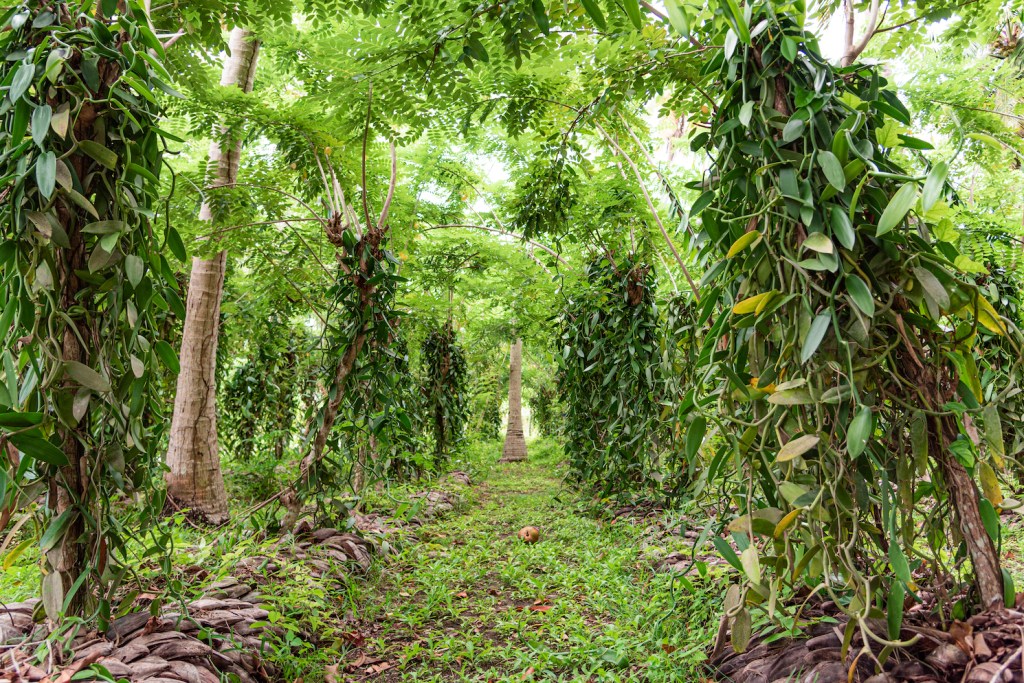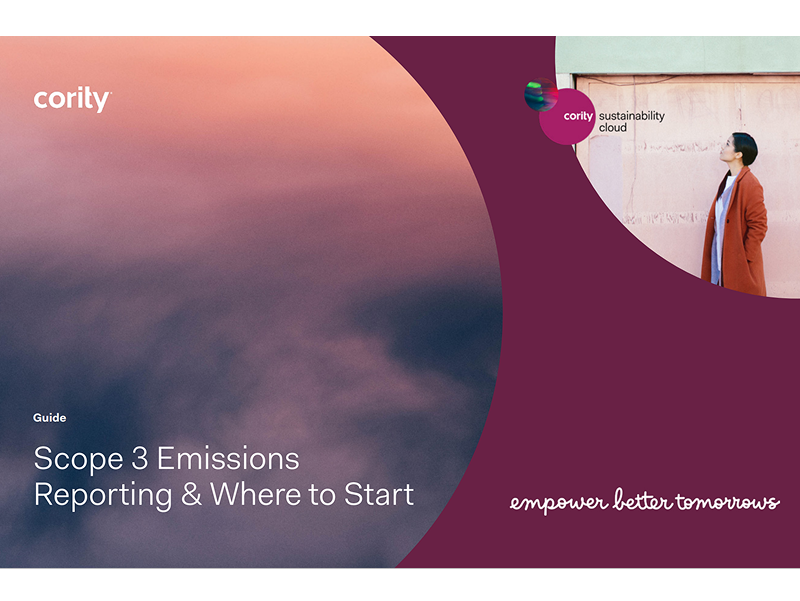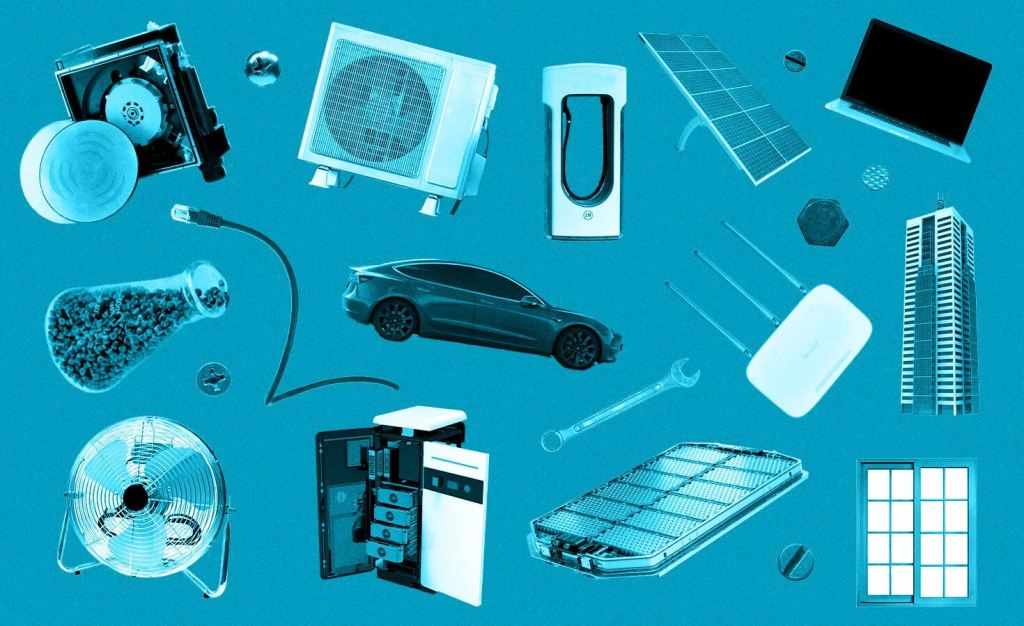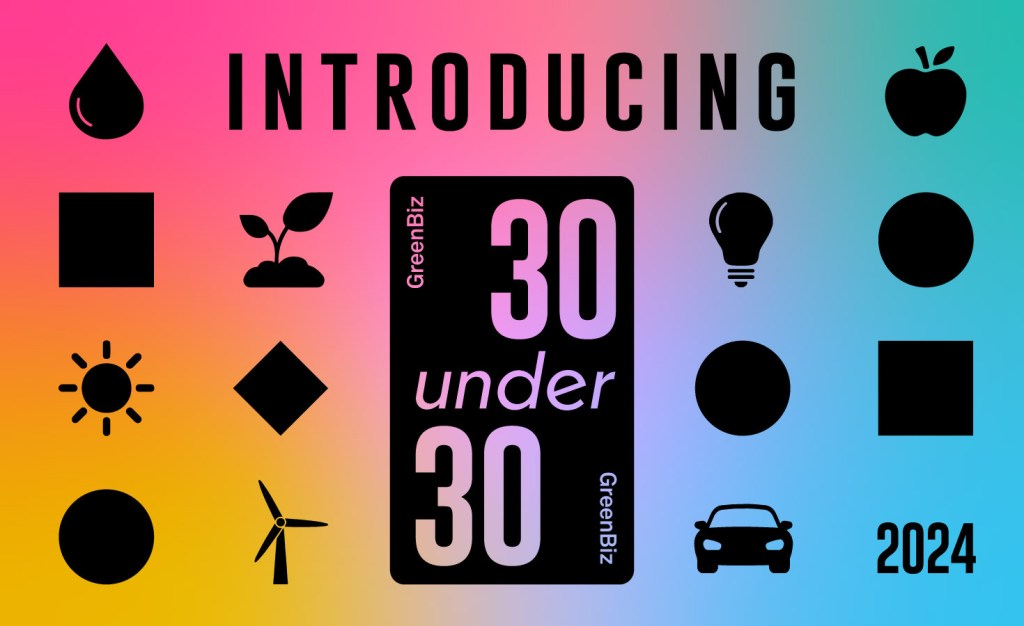Is sustainable vanilla the flavor of the month?
The economic and social challenges dampening efforts to reduce its environmental impact. Read More

Vanilla grows in the shade in of trees in the forests of Madagascar
How do you ensure the sustainability of an ingredient of which most recipes only call for a quarter of a teaspoon? Or when only a few drops of a fragrance are needed for an entire bottle of body scrub?
Food and cosmetic companies are investigating their sources, joining forces and investing in their vanilla supply chains to address this challenge. And as the vanilla harvest season starts this month, the sustainability of this common but vital ingredient is being scrutinized more closely. Big food and personal care companies including Aveda, L’Oreal and General Mills have outlined ways they are ensuring the sustainable and ethical production of vanilla for their products.
In 2019, L’Oreal worked with 261 vanilla farmers to define responsible practices and fair wages; Aveda is employing the blockchain to track its vanilla from farm to extractor to beauty product; and Häagen-Dazs, a General Mills brand, collaborated with vanilla supplier Vanilla Dare, international humanitarian organization CARE in 2017 and Madagascar-based NGO Fanamby in 2016 to improve farmer incomes, ensuring a steady stream of quality vanilla for its ice cream.
Leonardo Bonanni, CEO of Sourcemap, said brands usually need so little vanilla for their products that individual companies don’t create direct relationships or exhibit massive influence with farmers the way they might for wheat or dairy. The Sustainable Vanilla Initiative has combined the power of 28 corporations including General Mills, Frontier Co-op, Nestle, Unilever, Mars and McCormick — representing about 70 percent of the annual worldwide vanilla bean purchases by volume — to address the macro problems as a unit, negotiate with governments on transparency and harvest dates and invest in traceability tools.
According to Don Seville, co-director of the Sustainable Vanilla Initiative, vanilla cultivation is an inherently environmentally sustainable process. Vanilla is grown through agroforestry primarily in Madagascar and a bit in Uganda; no clearing or chemical fertilizer is necessary. The vine is a habitat extension that thrives in the shade cover of natural forests. According to companies that source vanilla, well-planned and conscientious vanilla agriculture actually could help decrease deforestation, but when prices are high sometimes “first-time” vanilla growers will clear-cut forest to expand growing because of lack of knowledge.
“You can grow it in diverse structures with other crops, which is good for farmers and good for the environment,” Seville said. “And it grows in some of the poorest areas of the world. So it’s a great economic opportunity.”
Eliminating child labor
But with opportunity comes some challenges. Vanilla’s sustainability problems are more economic and social than environmental, according to those interviewed for this story, and leaders in the space are trying, in particular, to address child labor issues, price volatility and traceability.
In 2018, a 2016 Obama administration law took effect that closed a loophole that previously allowed products made overseas to use child or slave labor. Bonanni said at that juncture, many brands started taking a closer look at their vanilla supply chains.
Most of the world’s vanilla is grown in Madagascar in extremely rural areas by family operations. So the line between a child helping out on the family farm and child labor can be confusing. According to Seville, the Sustainable Vanilla Initiative ran a campaign to help educate farmers on what level of work is appropriate for their kids.
Making remote connections
That ruralness creates the second major issue for companies hoping to create more sustainable vanilla supply chains: traceability.
According to Seville, the villages that grow vanilla come from very inaccessible parts of northeast Madagascar — you still have to canoe several days, hike through mountainous regions or pass very difficult roads to reach them. Many small-scale distributed farmers work with middlemen to collect and sell the pods to extractors. Most companies aren’t buying straight vanilla pods; the market is much more focused on vanilla extract, so they typically work with extractor companies that source the vanilla pods from farmers and produce the liquid extract. As a result result, the companies behind brand name products are often many steps removed from the farmers.
“There are so few extractors compared to people who are selling some kind of [vanilla] product,” said Seth Petchers, sustainable supply chain manager at Frontier Co-op, a spices and seasoning producer that sells in grocery stores, including Whole Foods. “So working closely with the extractors that we partner with, to be transparent and actually get a read of what’s going on in the ground is how we’ve overcome what we don’t source directly.”
Frontier Co-op uses a scorecard to evaluate vanilla suppliers for categories such as soil health monitoring, pollinator food and habitat created, potable water on facilities for workers and ethical land acquisition, among others.
Some companies do go to Madagascar to evaluate the farms for themselves. Rise Brewing Co, which sources vanilla for its nitro cold brew, plans to visit Madagascar in October to evaluate farms. Jarrett McGovern, co-founder of Rise, said he will be looking for hand pollination, good labor conditions and little water runoff.
But flying all the way to Madagascar is not the norm. Most companies will rely on technology and tools to increase the traceability and transparency of the plant.
Metajua is one of these supply chain management technologies. The platform documents and identifies farmers, their practices, certifications and the entire export process on a mobile app used by brands and Metajua’s employees. As of now, many vanilla farmers don’t have smartphones, so they don’t input data themselves, but some farmers with phones can send data through an SMS text message.
“Vanilla farmers are very scattered,” said Charles Angebault, founder of Metajua. “If you want to buy a commercial volume of vanilla, it means that you need to cover a pretty big distance. So there’s been a very strong focus for a number of years on the industry to really promote traceability.”
Unlike the other ingredients Metajua traces, such as coffee and spices, according to Angebault, vanilla is much more expensive so the quality analysis is much more important. And because vanilla comes in many forms, assessing how it was prepared is an added complexity, he said.
Overcoming price volatility
The third issue, price volatility, creates a ripple effect in the industry, affecting everything from recipe development to sustainable farming practices.
For example, in 2017, after a cyclone hit Madagascar wiping out the vanilla crops, prices skyrocketed to $600 per kilogram. In 2020, the U.S. import database lists the average 2020 price of cured vanilla imported from Madagascar into the U.S. at $267 per kilogram. In 2019, prices got as high as $438 per kilogram. The wide fluctuations are due to the delay between changes in demand and harvesting, weather events and traditional commodity trading issues.
Because vanilla production is highly concentrated and the delay between planting and harvest is a matter of years not months, the supply and demand are frequently out of sync, creating a boom-and-bust cycle. Vanilla vines take up to four years to mature, and the flowers only bloom for one day of the year, making pollination an exact science. The extraction process adds another step before the vanilla can be sold to most flavor, food or cosmetic companies.
When demand increases due to consumer preferences and companies formulate new recipes with all-natural vanilla, there often isn’t enough supply for a couple of years. And according to Seville, there is no formal information system to keep farmers aware of the trend; they just suddenly notice more demand and prices increasing. But they don’t know how long that environment will last, so they are wary of planting more vines for fear of an oversupply and crashing prices in three years. With prices remaining high, companies will reformulate and move away from natural vanilla, dropping prices and creating the never-ending cycle.
“Just when you feel like you’re getting a handle on it, the market goes in the other direction,” Petchers said.
Both farmers and companies benefit from long-standing, consistent relationships that guarantee purchases for decades. But the volatility always attracts bad actors to the market that impede this goal.
“Traders show up with a suitcase full of cash, and the farmers will tend to respond to that,” Seville said. “Company programs rely on loyalty where you’re investing in farmers and those farmers sell to you. And so when markets are stable or prices are moderate, farmers are usually pretty happy with that. And companies are pretty happy with that. But when prices go really high, and everybody’s scrambling to get vanilla, it really undermines those long-term, good relationships you’re trying to build up. Farmers gain a little bit in the short term. But then things tend to unravel. And they’re left without the support and protection of being in a long-term relationship.”
That volatility makes it hard for farms to spend time and money on sustainability investments. According to Seville, Sustainable Vanilla Initiative members have helped create programs that reach farmers to teach them how to improve soil fertility and decrease erosion — practices that ultimately will create a more productive and more environmentally friendly farm.
“I don’t know that we’re going to ever be able to do away with the fluctuation entirely,” Petchers said. “But can you make farmers more resilient? So that when these things inevitably happen, it doesn’t have dire consequences.”













